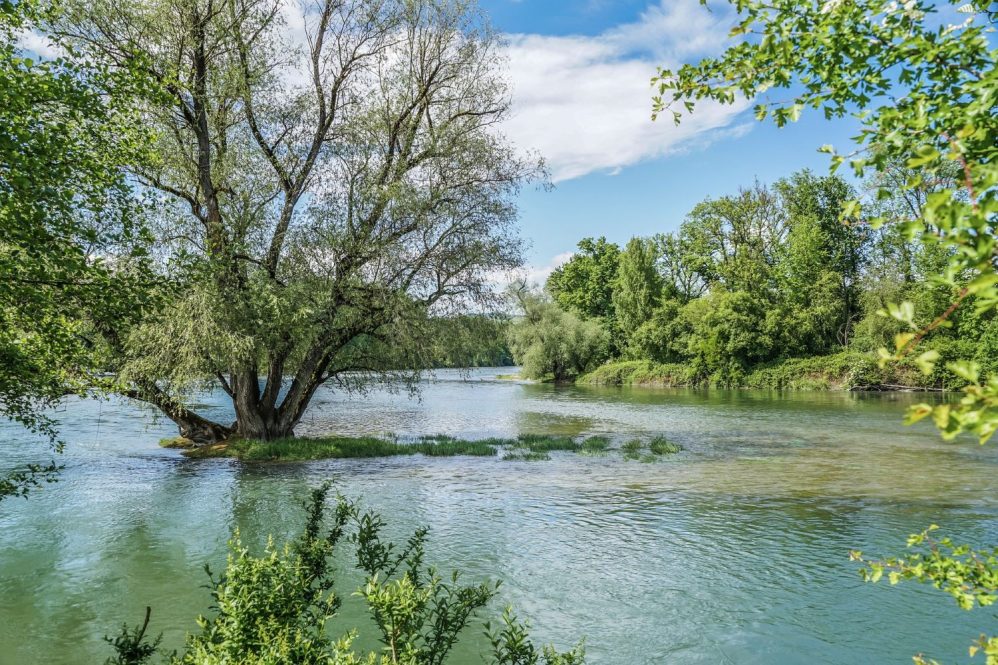While fish and most other water-dwelling creatures don’t breathe air, they do still need oxygen.
Normally, these animals get all the oxygen they need from the water. But sometimes bodies of water develop hypoxia – a state of low oxygen levels that can lead to “dead zones” that can kill massive numbers of fish and other organisms.
Hypoxia is a growing concern as some of the major causes of hypoxia are nutrient pollution from human fertilizers and other products, and warmer temperatures associated with climate change.
A recent multi-institution study including Ashley Helton from the College of Agriculture, Health and Natural Resources found that hypoxia in rivers is significantly more common than previously thought.
The team, led by the University of Nevada, Reno looked at 125,000 locations in 93 countries, using data spanning from 1900 to 2018.
They found that short-term hypoxic conditions were widespread in rivers across the globe with 12.6% of all locations exhibiting at least one hypoxic measurement. This is a significant increase from previous thinking, which seemed to indicate hypoxia in rivers was extremely rare.
This research was recently published in Limnology and Oceanography Letters.
“One of the things that gripped us when thinking about hypoxia in rivers was that hypoxia is often synonymous with lakes and estuaries – still water. Because when you have moving water, you have more oxygen,” says Helton, an associate professor in the Department of Natural Resources and the Environment and deputy director of UConn’s Institute of the Environment.
Helton and Lauren Koenig, a postdoctoral research assistant, analyzed how geospatial characteristics of the area, like stream slope and land cover surrounding the river, contributed to hypoxia.
They found that small and flat streams were most vulnerable to hypoxia when water temperatures rose. Having a higher stream slope helps gas mixing in the river which helps prevent hypoxia.
The researchers also found that the probability of hypoxia in a river increased 6.4% across watershed population densities, as wetlands and areas with higher populations tend to have more nutrient pollution flowing into the river systems.
This study provides a much more accurate picture of hypoxia in rivers thanks to improvements in technology. Previously, researchers could only measure oxygen levels in rivers by going into the river and taking the measurement themselves. Now, technology enables constant monitoring, including overnight when, because aquatic plants and algae are not photosynthesizing, oxygen levels naturally decrease.
“Once you’re capable of measuring oxygen throughout the day and night, you’re able to see these short-term hypoxic events,” Helton says.
Previously, hypoxic conditions in rivers tended to only gain attention after the fact, like when a massive number of fish died.
“Hypoxia tended to be reported when there were fish kills, when big flashy things happened,” Helton says.
While the researchers did not find an overall increase in hypoxic conditions in rivers since the 1950s, certain areas, like Florida, have seen significant increases.
Because hypoxia kills aquatic life, it can also stimulate the production of greenhouse gases methane and nitrous oxide.
Better understanding what conditions make a river more susceptible to developing hypoxic conditions allows researchers to better monitor and manage these systems to protect aquatic life.
“We can become more proactive to prevent any major hypoxic events that have immediate and dramatic effects on ecosystems,” Helton says.
This project began following workshop in September 2018 held in Switzerland and convened by Jim Heffernan and Tom Battin from Duke University. The workshop aimed to advance the global understanding of the dynamics of hypoxia in rivers and streams and was supported by the Swiss National Science Foundation and the U.S. National Science.
This work relates to CAHNR’s Strategic Vision area focused on Fostering Sustainable Landscapes at the Urban-Rural Interface. Helton and Koenig’s work was also supported by NSF Award number 1442451.
Follow UConn CAHNR on social media



